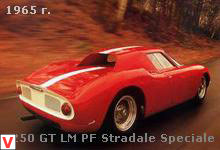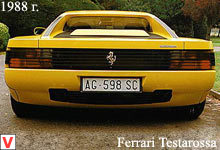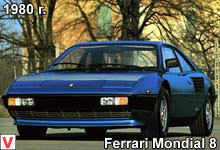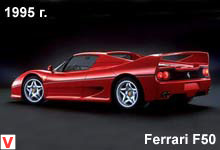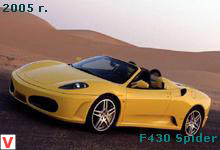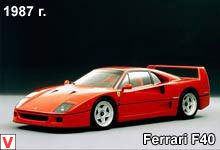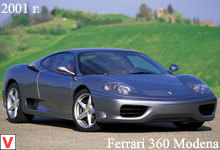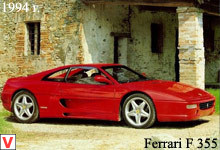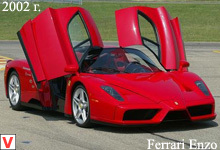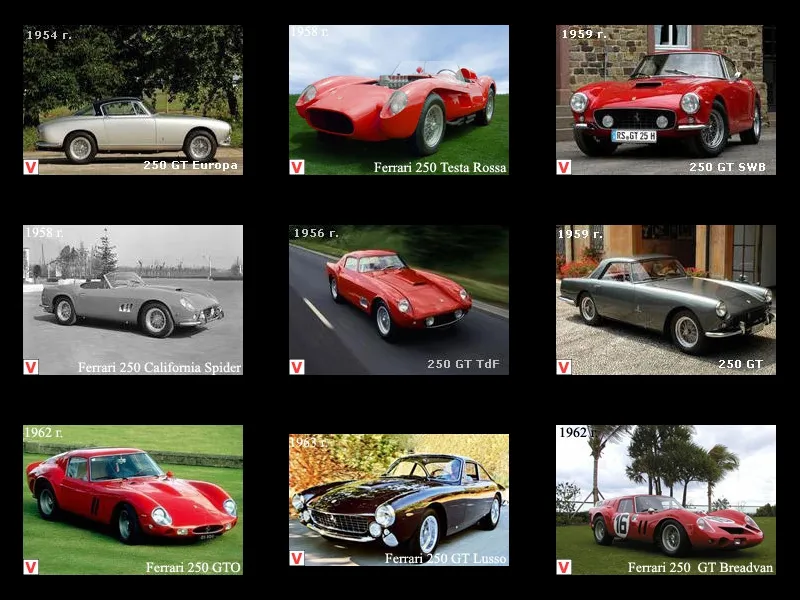
Ferrari with an index of 250 were produced from 1954 to the end of the 60s in numerous modifications, most of them going “individually” or in very limited quantities. All 250s were a 2-door rear-wheel drive coupe- “berlinetta” with hard (hardtop) or open (convertible) riding and belonged to the GT class - Grand Tourismo, but in essence were real supercars. The name of the model comes from the number of “cubes” (cm³) per cylinder — 250. Production of the Ferrari 250 GT model with a three-liter engine from Gioacchino Colombo for more than a decade (up to 1968) established for Ferrari the unofficial title of "road owner".
On its base, with modifications of various ateliers and design groups, as well as for participation in various races, up to 20 modifications were built. The model Ferrari 250 GT Europa appeared in 1954 and marked the beginning of the cooperation Ferrari c Pininfarina bodywork studio. The body design was developed by Francesco Salomone.
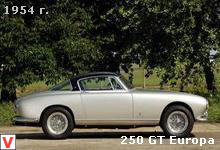
Europa was a prime example of a classic rear-wheel drive car with a V12 engine, presenting the final development of the Pininfarina’s own style of atelier. A total of 18 copies of the Europa model were collected, of which 15 had the body of a famous atelier. It was the first Ferrari, created for public roads, and not for the race tracks. The interior, as well as the exterior, did not express excessive claims to sportiness. The number of seats 2 + 2, curb weight of the car was 1150 kg. Machines with engines of 2.953 liters capacity of 200 hp. (at 6500 rpm) were intended for the European market and were called Europa.
A car with this engine accelerated to 100 km / h in 8 seconds and had a maximum speed of 185 km / h. On the North American market were models with 4,523-liter engines, they were called 357 America. The engines are aggregated with a 4-speed manual transmission, which had synchronizers and a thin long lever. The front suspension was independent, semi-independent rear. Brakes were installed drum. By modern standards, dynamics and controllability were mediocre, but in 1954 it was a real leap forward.
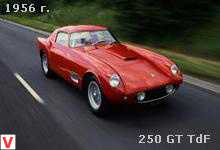
Among all the 250s, GT cars with a long wheelbase LWB were especially successful, which, after winning the Tour de France in 1956, received an additional three letters in the title - TdF. Inspired by his success, Enzo Ferrari began a serial production of road versions with a derated engine: first the 250 GT Boano coupe, then the Pinin Farina cabriolet (1957), and in 1961, Scaglietti creates the Ferrari 250 GT SWB California Spider. The 250 GT TdF chassis was chosen for it, both with a long and with a shorter wheelbase, there were also slight changes in the exterior. In addition to the derated engines, racing engines with a capacity of more than 250 hp were also installed on the model.
It was produced about a hundred cars of this version. From 1957 to 1958, 19 unique Ferrari 250 Testa Rossa racing cars were assembled at Ferrari (the “Red Head” is based on the color of the engine block). 800-pound model had a body with pontoon wings of the Scaglietti, the traditional V12 engine, with a capacity of 300 hp, rear-wheel drive and 4MKPP.
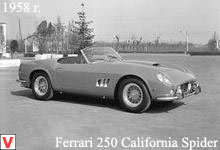
This racing car reached a top speed of 270 km / h. However, the steel frame had a ladder design, the DeDion rear axle has long been used in racing cars, outdated drum brakes were on all four wheels, and the engine design had more than a decade history. From 1958 to 1961, 250 TR participated in 19 races, taking first place ten times. During this time, the design of the car was constantly improved: Dunlop disc brakes appeared, the engine valve springs were replaced, which led to an increase in power up to 306 hp, a 5-speed gearbox was installed. In the 1961 season, the version received a new chassis with a spatial design and the name 250 TRI.
The introduction in 1962 of the new rules associated with a number of tragic cases during the competition, deprived Testa Rossa of the possibility of further participation in the race. In 1959, the 250 GT SWB version was introduced in Paris. The SWB index denoted a short, 2400 mm base. It was a sports car with minimal trim and a stiffer suspension. The chassis and engine did not undergo any significant changes compared with 250 TdF. Body styles have become smoother and more rounded. This car won not only on the circuit races and rally tracks, but also in numerous beauty contests.

Supercar Ferrari 250 GTO (the letter “O” in the name means Omologata) was first presented at the Paris Motor Show in 1962, it was produced until 1964; it was one of the most famous racing cars, considered the quintessence of all Ferrari models. In 2004, the famous American magazine Sports Car Intternational called the 250 GTO the best sports car of all time. In addition, one of the oldest automotive publications Motor Trend Classic has assigned the model number 1 in the list of all Ferrari. The 250 GTO was created to participate in GT racing. He made his debut at 12 Hours of Sebring in 1962. He won the World Manufacturer's Championship for three years in a row: in 1962, 1963 and 1964.
In 1962, the GTO took second and third places in the 24 Hours of Le Mans race. A total of 36 cars were produced 250 GTO. The future owners of each of the 36 GTO 250 were determined by Enzo Ferrari himself or his North American representative, Luigi Chinetti. As a result, at present their cost in the market is estimated at an average of about five million dollars per copy. At the same time, a large number of fakes of the 250 GTO are noted, primarily from much more common other modifications of the Ferrari 250 GT. The successor to the 250 GTO was in 1984 the Ferrari 288 GTO. The 250 GTO was the latest Ferrari with a front engine and the evolution of the 250 GT SWB.
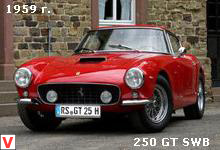
Chief Engineer Giotto Bizzarrini took the chassis from the standard 250 GT SWB and connected it to a 2.953-liter (for America 3.967 l) V12 engine with a light-alloy cylinder block and six Weber 38 DCN carburetors from the Testa Rossa version 250. Moreover, the weight distribution on the axles was improved by shifting the engine back and its lower position, which could not but affect the handling. By completions engine power increased to 300 hp (at 7400 rpm), acceleration to 100 km / h began to take 5.6 s, and the maximum speed of 250 GTO reached 265 km / h; among the racers the car got the nickname “Italiano Rosso Corsa”.
Later, engineer Mauro Forghieri and designer Sergio Scaglietti joined the project. The body was tested in a wind tunnel and improved under the personal control of Enzo Ferrari. The rest of the car’s components were the result of Ferrari’s well-tuned to the early 60s technology: a hand-welded spatial tube frame, a single-plate clutch, independent front suspension with triangular levers with rigid coil springs and shock absorbers disc brakes, Borrani wheel spokes, as well as a new 5-speed gearbox and a new door design that increases the rigidity of the body structure, keeping Yasha in later models.
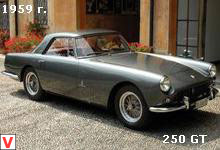
As a result, as Ferrari's competitors said, only the red color remained from the original model. The interior of the car was extremely simple, the speedometer was located on the side of the console and played a “second” role, because the centerpiece on the panel right in front of the driver was a huge tachometer, some switches were used from the Fiat 500, and the fabric in the finishing was from work overalls. It is believed that all 36 cars today are "alive", and some of them are still taking part in the Monterey Historic Races at Laguna Seca.
In 1962, engineers Giotto Bizzarrini and Carlos Chiti under the leadership of the owner of the racing team Scuderia Serenissima Giovanni Volpi based on the standard 250 GT was created in a single copy of the Ferrari 250 GT Breadvan ("Bread Wagon"). The engine was moved as far as possible and was completely behind the front axle - 12 cm further than in the GTO. It had a dry-sump lubrication system and was equipped with 6 Weber carburetors, the power reached 300 hp The gearbox was a 4-speed base, and the wheels and tires on the GTO.

The front of the car was much lower, which made it necessary to install a plastic cowl over the carburetors, and had a sharper shape. The very first race in Le Mans in 1962 ended unsuccessfully due to the failure of the driveshaft. The car, which led the race for four hours, left the race. In the same year, the Ferrari 250 GT Breadvan finished third in the race at Monleri, losing to the two 250 GTO. For the first time the Ferrari 250 GT Lusso appeared in October 1962 at the Paris Motor Show, where it won success thanks to the elegant proportions of its body, developed by Pininfarina.
The interior of the two-seater sports car was quite spacious, made possible thanks to the 250-horsepower 3.0-liter engine shifted forward. The 250 GT Lusso had a lot in common with the legendary 250 GTO racing car: the same wheelbase, suspension, disc brakes, wheel-mounted Borrani wheels and a full-aluminum V12 engine. Despite the fact that Lusso did not have the same modern chassis, and in the steel structure of the aluminum body there was only a hood, trunk and doors, many owners used these cars for racing. It was built 348 copies of this version.

At the end of two phenomenally successful seasons, Enzo Ferrari felt the need to replace the 250 GTO. The reason was the big Cooper, put in the Formula 1 mid-engined car. After Ferrari won the Le Mans 24 Hours race in 1963 with the engine installed in the database, the Ferrari 250P was approved to create a series of 100 mid-engine GT-class cars - Ferrari 250 LM. Ferrari 250 LM was presented to the public in 1963 at the Paris auto show, and a total of 32 cars of this version were produced.
Ferrari 250 LM Pininfarina Stradale Speciale debuted in Geneva in 1965. Pininfarina was engaged in the construction of the body; Salon turned out to be increased, and the base is extended to 2600 mm. To keep the proportions of the car, increased the overall length and width. For more convenient access to the cabin, a part of the roof was opened and the engine compartment was covered with a plexiglass cover. The car was released in a single copy and painted white with a blue stripe.
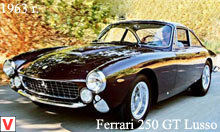
In addition, different versions of the Ferrari 250 GT were produced over the years: Zagato Ferrari 250 GT Berlina (1956), Zagato Ferrari 250 GT Coupe Corsa (1956), Zagato Ferrari 250 GT Competizione (1957), Ferrari 250 GT Coupe (1958), Ferrari 250 California Spider (1960-1963), Ferrari 250 GTE 2 + 2 (1960-64), Ferrari 250 GT Bertone (1961), Ferrari 250 GTE (1963), Ferrari 250 GT SWB Sperimentale (1959).
Other images auto Ferrari 250
